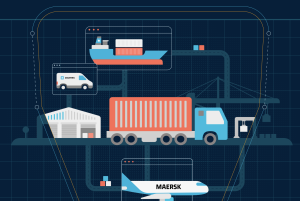Getting the fundamentals right is key to SRM success, says supply chain management expert David Atkinson.
 Most change programmes fail because of a lack of senior management agreement and a haphazard approach. That was the opening message from David Atkinson as he began his talk on Supplier Relationship Management (SRM) at IMPA London, during which he offered insight gained from his 20-year procurement career.
Most change programmes fail because of a lack of senior management agreement and a haphazard approach. That was the opening message from David Atkinson as he began his talk on Supplier Relationship Management (SRM) at IMPA London, during which he offered insight gained from his 20-year procurement career.
“One of the problems SRM initiators have is dealing with senior management that are sceptical about the return on investment,” he said. “Often what senior management do not understand is that SRM is more than just cost reduction. It is a long game.
“People cherry pick what they think are good ideas for their change programme. The problem is that they are not joined up. People work on that project for a year and find they are not getting ROI, so they re-launch the project, again going off on a different angle.
“Pulling it all together needs a far more strategic approach, looking at causes and effects. It is very logical.”
According to Atkinson, well-designed SRM programmes are also based on proper strategic and systematic thinking. The key to unlocking real value though, comes from knowing why you’re going to do it in the first place.
Long-term value
In three years as procurement director at Rolls-Royce, Atkinson achieved 21% cost savings, improved quality by 400% and improved supplier delivery by a factor of 10. This was all from a stable supply base where, for years, the cost had been escalating, quality performance was poor and delivery performance was poor – it was done with almost no resourcing of the business.
“People cherry pick what they think are good ideas for their change programme. The problem is that they are not joined up.”
“We did this through supplier relationship management. We’re talking about managing suppliers for value post-contract. It’s not about sourcing, though long-term it will have an influence. But it’s about post-contract value.” While it is not possible for everyone to achieve similar results, Atkinson believes SRM success is achievable for all through logically developed, coherent strategies and learning from others.
“Establishing successful cross-functional working on SRM projects is critical,” Atkinson adds. “Great SRM is dependent upon cross-functional working. You need to have the capacity to work collaboratively. Unless you ring-fence resources – that is people – who will drive value improvement activity with your suppliers, you are going to struggle to generate sustainable benefits.
“Fundamentally though, you do not have a chance of SRM success if you do not understand what your overarching purpose is.”
Fit for purpose
Knowing why you are launching the programme is critical to establishing your SRM action plan. You may have had quality failures from suppliers, late deliveries, urgent cost reduction requirements or senior management driving innovation. Either way, it is a case of knowing why you are doing it, who you are doing it for and what the numbers are going to look like.
“The question you ask is how you define the purpose of SRM and its contribution to the business,” says Atkinson. “Once you have done that you can start thinking about your stakeholders or customers or even external customers. Then you have got to think about the money. What is that value? What must SRM’s financial contribution be to stakeholders in the business?”
The process perspective is next on the agenda – this addresses how you will satisfy the business and satisfy the stakeholders, and identifies the areas in the SRM programme that you will have to excel at to satisfy those demands. Once you have done that you need to think about systems, organisations and training. “Throwing money at systems and training is not the answer per se, because unless you know what the perspective is you do not know what that system or training is for. If you get systems, organisation and skill development in place, but you don’t have a process, then you end up with very clever people all doing different things. “If you have the process in place you have a good chance of delivering the financial numbers, satisfying stakeholders and achieving your overarching purpose.”
Getting perspective
Defining your overarching purpose – what you are doing SRM for – may not be immediately obvious, nor that easy to define.
According to Atkinson, it typically has three key elements that, once established, will give a clearer picture of the specifics of your SRM programme.
“It’s about optimising value for money, not just cost. It’s about quality, delivery, corporate reputation, the eco-agenda – whatever may be important to your business. You have to optimise value for money.
“It is about the deliberate pursuit. The benefits of SRM do not happen by accident. The organisations that do it well have been doing it well for some years with some great discipline. You have to work with real intention if you are to get the benefits of working with SRM. “It is about post-contract value too. This does not have to come from all of your supplier relationships, though you can fit them all into an SRM programme. The reality is you have limited resources to work with some of them. You have to decide which are the most important.”
This article was originally posted on http://readmt.com


























